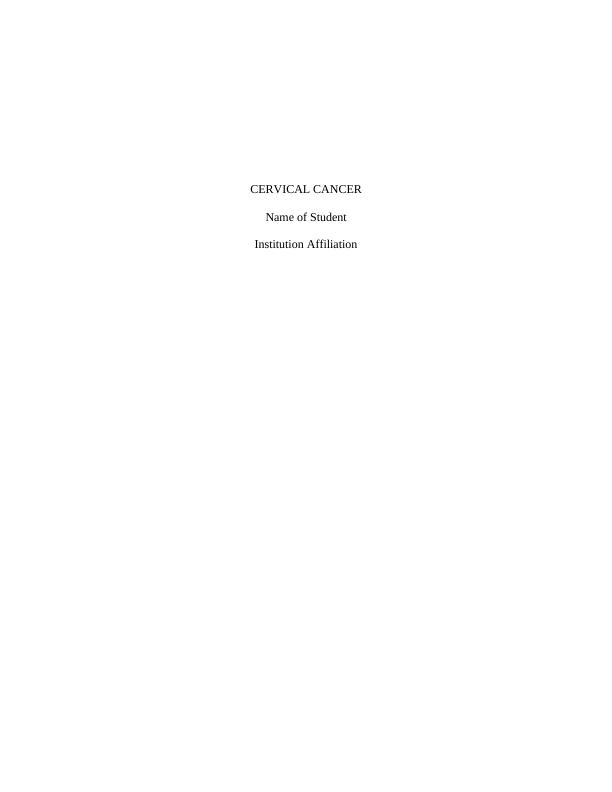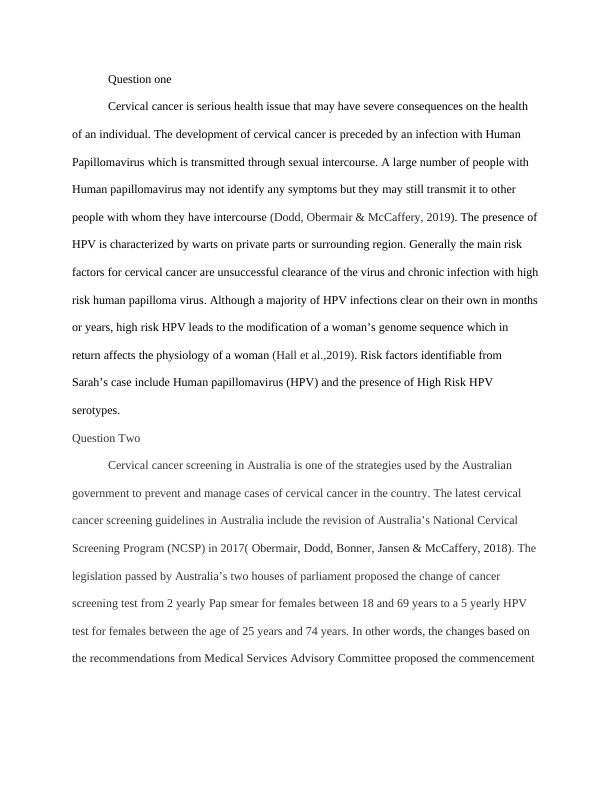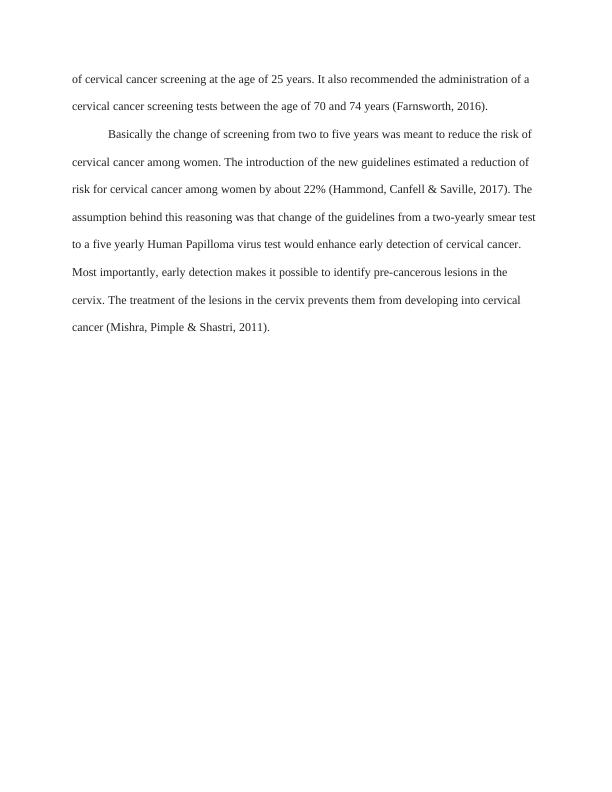Assignment Cervical Cancer
Describe pathophysiology of cervical cancer. What risk factors can you identify in Sarah’s case?
6 Pages804 Words15 Views
Added on 2022-09-10
Assignment Cervical Cancer
Describe pathophysiology of cervical cancer. What risk factors can you identify in Sarah’s case?
Added on 2022-09-10
ShareRelated Documents
End of preview
Want to access all the pages? Upload your documents or become a member.
Pathophysiology of Cervical Cancer | Report
|5
|777
|22
What Is a Case Study? | Examples & Methods
|5
|698
|17
Description of pathophysiology
|5
|858
|43
Assignment | Nursing Cervical Cancer
|4
|1005
|19
Pathophysiology of cervical cancer
|3
|686
|31
Cervical Cancer Prevention Education for Asian Women
|7
|2014
|488



